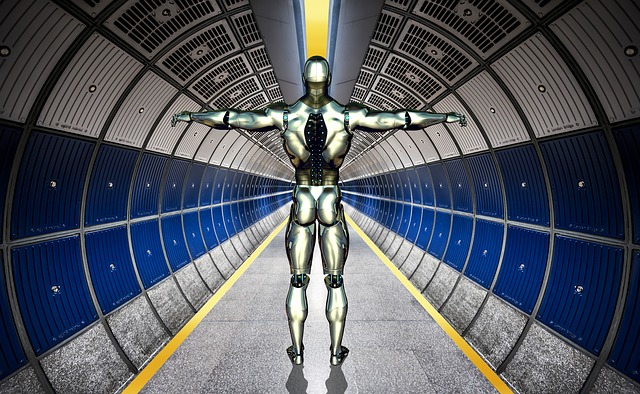Artificial Intelligence Colonoscopy System Shows Promise – Medscape
A new artificial intelligence (AI) system can help expert endoscopists improve their colonoscopies, a new study indicates.
Endoscopists using the computer program SKOUT (Iterative Scopes, Inc) achieved a 27% better detection rate of adenomas per colonoscopy compared to endoscopists working without computer assistance, said lead author Aasma Shaukat, MD, MPH, director of outc…….

A new artificial intelligence (AI) system can help expert endoscopists improve their colonoscopies, a new study indicates.
Endoscopists using the computer program SKOUT (Iterative Scopes, Inc) achieved a 27% better detection rate of adenomas per colonoscopy compared to endoscopists working without computer assistance, said lead author Aasma Shaukat, MD, MPH, director of outcomes research in the Division of Gastroenterology and Hepatology at New York University in New York City.
The study showed that AI colonoscopy systems can work in a routine population of US patients, Shaukat told Medscape Medical News.
“As gastroenterologists, we are very excited,” she said.
The study was published online in Gastroenterology and was presented at Digestive Disease Week 2022.
Previous research has shown that experienced endoscopists miss many polyps. To improve their detection rate, multiple companies have used machine learning to develop algorithms to identify suspicious areas.
“Once the computer sees the polyp, it puts a bounding box around it,” said Shaukat. “It draws the attention of the endoscopist to it. It assists the endoscopist but doesn’t replace the endoscopist.”
The US Food and Drug Administration has approved two such systems: EndoScreener (Wision AI Ltd) and GI Genius (Cosmo Pharmaceuticals NV).
The SKOUT algorithm was trained on 3616 full-length colonoscopy procedure videos from multiple centers. In bench testing, it achieved a 93.5% polyp-level true positive rate and a 2.3% false positive rate.
Randomized Trial Pits AI Against Standard Procedure
To see how well the system works in the clinic, Shaukat and her colleagues recruited 22 US board-certified gastroenterologists from five academic and community centers. The gastroenterologists all had a minimum adenoma detection rate of 25%, defined as the number of colonoscopies in which at least one adenoma is found, divided by the number of colonoscopies performed. All the gastroenterologists had performed a minimum of 1000 colonoscopy procedures.
The researchers randomly assigned 682 patients to undergo colonoscopy with the SKOUT and 677 to undergo colonoscopy using the standard procedure. The patients were aged 40 years or older and were scheduled for either screening or surveillance.
The endoscopists who received computer assistance detected 1.05 adenomas per colonoscopy, vs 0.83 for those who did not have computer assistance, a statistically significant difference.
The proportion of resections with clinically significant histology was 71.7% with standard colonoscopies, vs 67.4% with computer-assisted colonoscopies. This fell within the 14% margin that the researchers had set to show noninferiority for the computer system.
“The important thing is not just detecting all polyps but the polyps we care about, which are adenomas, and doing so without increasing the false positive rate,” said Shaukat.
The adenoma detection rate was 43.9% for the standard procedure and 47.8% for the computer-assisted procedure. This difference was not statistically significant, but Shaukat argued that the adenoma detection rate is not the best measure of success, because endoscopists sometimes stop looking for polyps once they find one.
The overall sessile serrated lesion detection rate for the standard colonoscopies was 16.0%, vs 12.6% for the computer-assisted colonoscopies, which also was not statistically significant.
Next Steps
This study is important because it was a large, multicenter trial in the United States, said Omer Ahmad, BSc, MBBS, MRCP, a gastroenterologist and clinical researcher at University College London, in the United Kingdom, who was not involved in the study. Most of the trials of AI have been in China or Europe. “It was very important just to see this replicated in the US population,” he said.
The average procedure time was 15.41 minutes for the standard colonoscopies, vs 15.82 minutes for the computer-assisted colonoscopies, which was not statistically different.
“It is important to note that the studies so far suggest that false positives do not have a significant impact on workflow,” said Ahmad.
The next crucial step in evaluating AI colonoscopy will be to track the effects over the long term, said Shaukat.
“As these technologies get approved and we see them in practice, we need to see that it’s leading to some outcome, like reduced colon cancer,” she said.
That also may be necessary before payers in the United States are willing to pay the additional cost for this technology, she added.
In the meantime, Ahmad said computer assistance is improving his own colonoscopies.
“I have found the systems have spotted some polyps that I may have otherwise missed,” he said. “There is a false positive rate, but for me, it doesn’t distract from my workflow.”
He believes the systems will be particularly helpful in improving the performance of less skilled endoscopists.
He is also looking forward to systems that can help complete the reports needed at the end of each colonoscopy.
“Most of us dislike having to write a laborious report and having to code everything at the end of the procedure,” he said.
The study was funded by Iterative Scopes. Shaukat reports having received research funding to her institution for the current study from Iterative Scopes and consulting fees from Freenome and Medtronic. Ahmad reports receiving speaker fees from the Canadian Association of Gastroenterology/Medtronic.
Gastroenterology. Published online May 25, 2022. Abstract
Laird Harrison writes about science, health and culture. His work has appeared in national magazines, in newspapers, on public radio and on websites. He is at work on a novel about alternate realities in physics. Harrison teaches writing at the Writers Grotto. Visit him at www.lairdharrison.com or follow him on Twitter: @LairdH.
For more news, follow Medscape on Facebook, Twitter, Instagram, and YouTube.







